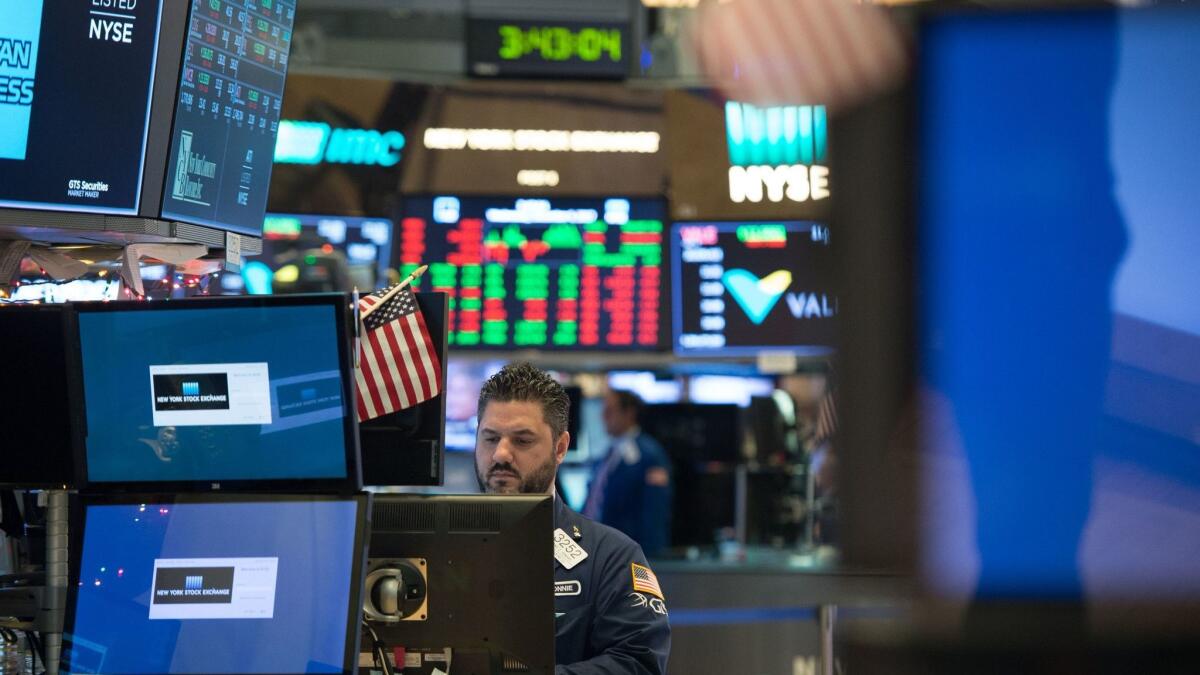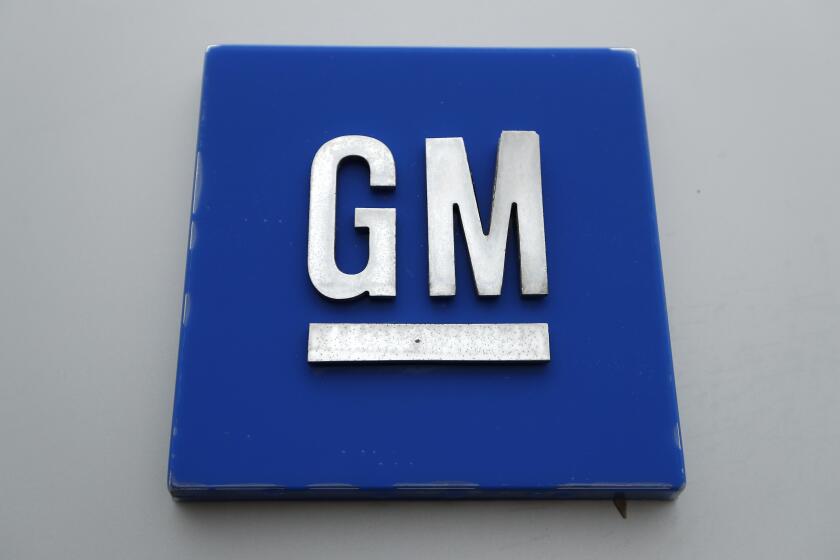For half of Americans, the stock market’s record highs don’t help at all

- Share via
The Dow Jones industrial average is poised to hit a record high of 25,000 points this week, with the Standard & Poor’s 500 and Nasdaq indexes similarly reaching new heights. The indexes are widely used as a kind of shorthand for U.S. economic health, appearing on nightly newscasts and President Trump’s tweets.
But for many, perhaps most, American households, those indexes measure an economy far removed from their own daily concerns. One figure from a recent working paper by New York University economist Edward Wolff illustrates that point: Fewer than 14% of American households directly own stock in any company.
Even when you consider indirect ownership via 401(k) retirement accounts and similar vehicles, about half of U.S. households don’t own any stock at all.
Until the early 2000s, stock ownership had been on the rise. From 1989 to 2001, the percentage of households directly owning stock rose to 21.3% from 13.1%, while the percentage owning any stock — including indirect ownership via 401(k)s — increased to 51.9% from 31.7%, per Wolff’s analysis.
But since then, stock ownership has declined. The share of households directly owning stock in 2016 (13.9%) is similar to the share in the early 1990s. The total rate of stock ownership, including indirect holdings, has fallen too but by a slighter amount, owing to the continued popularity of 401(k) retirement plans.
Wolff’s total stock ownership number is a couple of percentage points lower than the 51.9% reported by the Federal Reserve’s latest Survey of Consumer Finances because of differences in the calculation of indirect stock ownership. But the overall reported trends remain the same.
Like income and wealth, stock ownership is heavily concentrated in the uppermost echelons of the economy. The bottom 60% of households combined own just 1.8% of U.S. stock. The top 1%, by contrast, own more than 40% of the country’s stock, up from 34% in 2001.
Looked at another way, the top 20% of wealthy households (those with an average net worth of $3 million) own well over 90% of stock.
The factors driving inequality and concentration in the stock market are behind the parallel trends seen in U.S. income and wealth: disparities in education, as well as deliberate efforts by U.S. policymakers to raise taxes on the poor and decrease them for the rich.
For the top 20% of households, stocks’ day-to-day performance reflect real changes in their net worth and financial health. Big shifts in the market might mean the difference between, say, retiring today and retiring five years from now.
But for many of the other 80% of U.S. families, who collectively own less than 7% of the stock market even when you factor in their retirement accounts, the Dow and the S&P 500 are little more than numeric abstractions.
Ingraham writes for the Washington Post.
More to Read
Inside the business of entertainment
The Wide Shot brings you news, analysis and insights on everything from streaming wars to production — and what it all means for the future.
You may occasionally receive promotional content from the Los Angeles Times.










